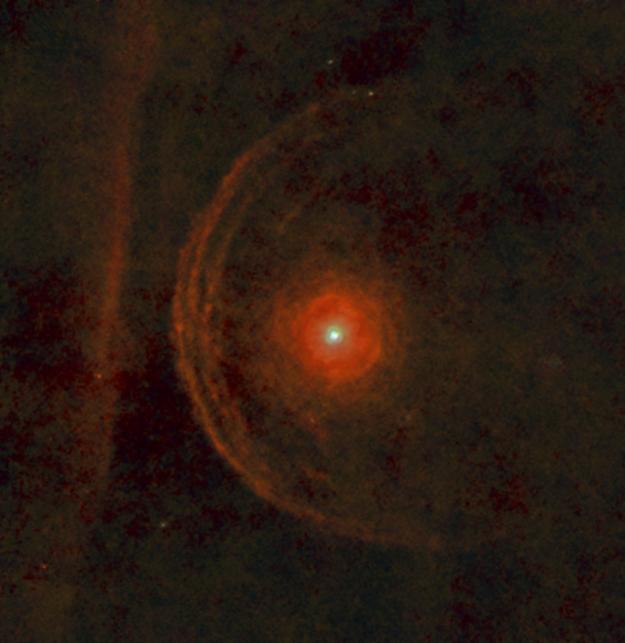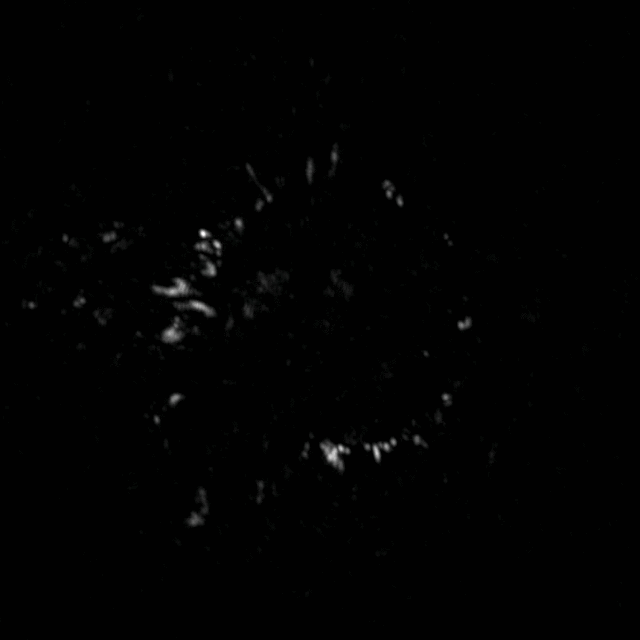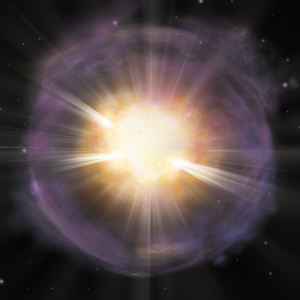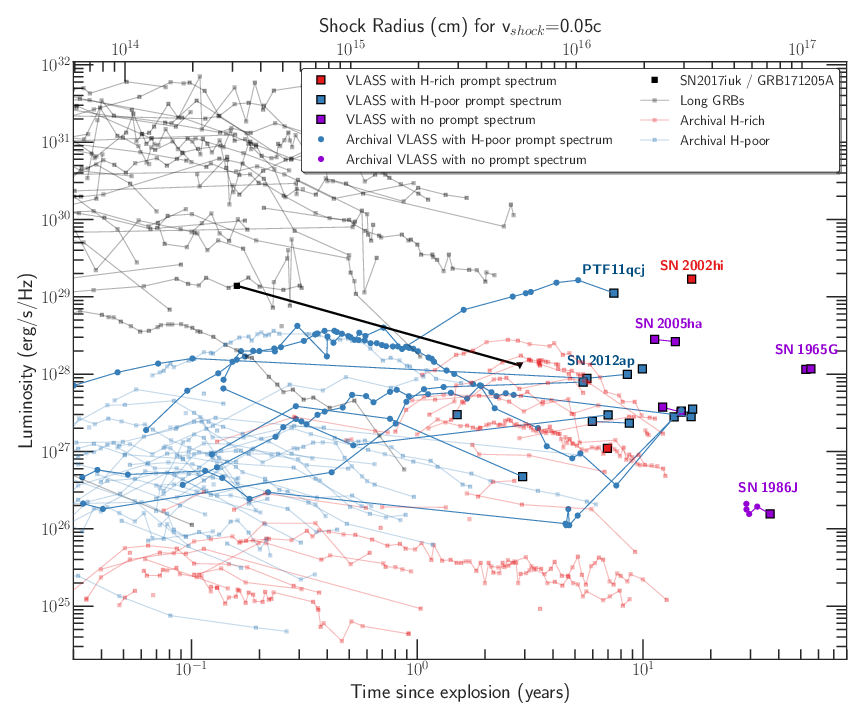Evolved Stars
I study evolved stars that are shedding mass into their circumstellar environments. I am interested in supergiants, asymptotic giant branch stars, Mira variables, semiregular variables, and OH/IR stars. While these stars lose mass, they also undergo period and luminosity changes. I utilize radio, infrared, optical, and ultraviolet observations of these stars.

The red supergiant star Betelgeuse (center) is surrounded by a clumpy envelope of material in its immediate vicinity in this view from the Herschel Space Observatory.
Masers
Maser emission is detected at radio wavelengths and requires very particular physical conditions to be produced. I utilize masers to probe into environments not accessible by optical and IR wavelengths. Maser emission is inherently bright, but requires very special conditions to be produced. In particular, I use observations of SiO maser emission around evolved stars to probe the regions surrounding the star. SiO maser emission can be a useful diagnostic of the chaotic circumstellar environments, since the stars are shedding mass and undergoing color and brightness variability.

VLBA movie of SiO maser emission around the star TX Cam over a two year interval. Converted to a gif from Diamond & Kemball 2003, ApJ, 599, 1372.
Supernovae
Radio observations of supernovae allow us to probe the nature of the circumstellar material, and precursor mass-loss rates. Examining the supernova synchrotron emission also yields information on the explosion mechanism, and properties of the black holes and neutron stars born from the explosion.

Artist’s depiction of SN2019ehk (courtesy of Aaron M. Geller, Northwestern University).
Late-time Supernovae Emission
I am currently conducting studies of the late-time radio emission to shed light on the progenitor properties, progenitor mass-loss episodes, and the properties of young neutron stars and black holes.

Luminosity versus time of late-time radio emission associated with supernovae detected in VLA Sky Survey observations. From Stroh et al. 2021, ApJ, 923, 24.